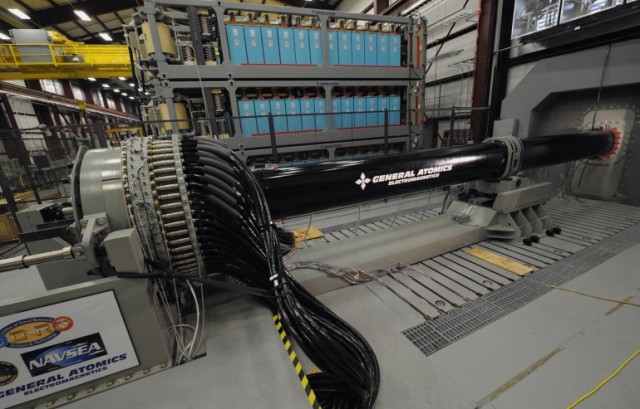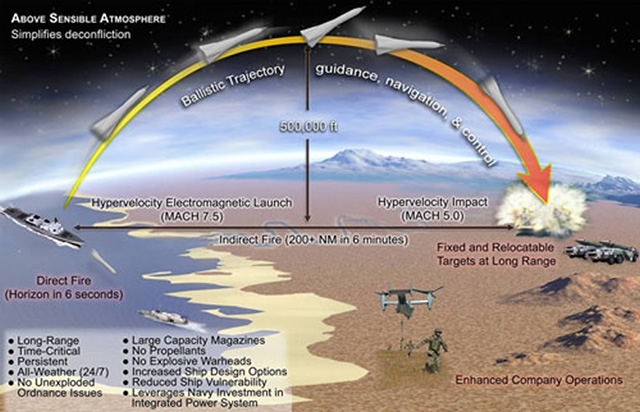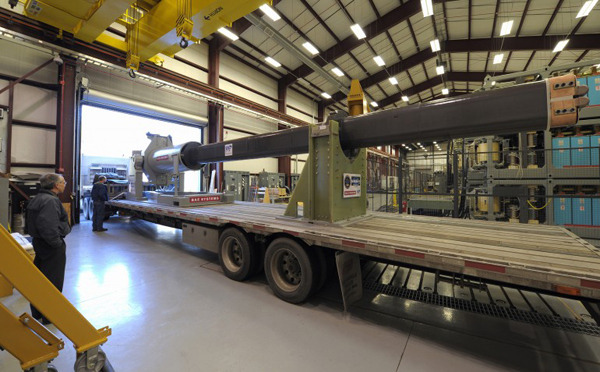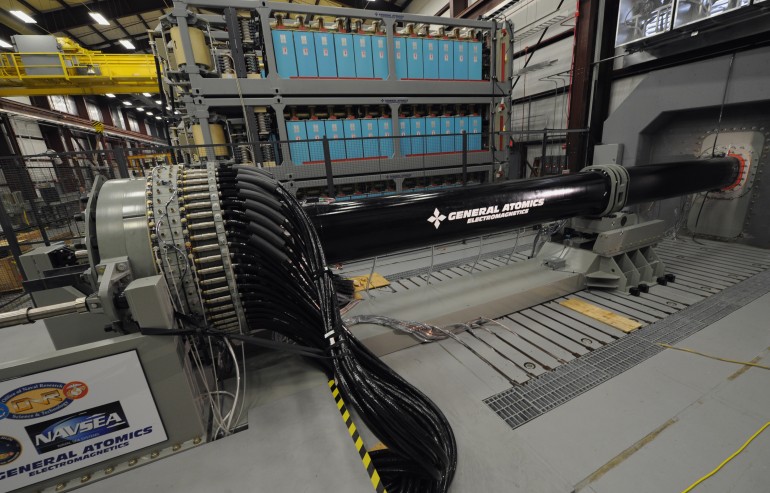Weapon crafting is one of the oldest and essential arts of the human being. Man makes deadly weapons in order to combat its rivals. Missiles are thought to be one of the most deadly and effective weapons nowadays due to their accuracy, range and lethality. However, designing of accurate and long range missiles is not only a complex but also a very expensive process. Nowadays, US navy is trying to make missiles which are not only cheaper than but also as effective.
The latest innovation is the introduction of the EM railgun which uses electromagnetic force in place of chemical propellant to make the projectile reach its target. The idea of EM railgun is not a new one but it is being experimented now. EM railgun is nothing else but an electric motor laid flat and folded out. The same phenomenon of pulling armature by alternating EM field is taken into use. Here, armature is a moving conductor used for projectile and placed between two rails. Armature is shot along the rails with high speed. As the armature reaches the edge of the rail, projectile is released by the armature which flies towards the target.


Initial results of such weapons are really impressive as they can gain a speed of 9,200km/h. the prototypes were designed by BAES and General atomic. They have capability of reaching the horizon within 6 seconds with a range of 203kms which is far better than conventional guns. No explosives are used as it has enough Kinetic Energy to destroy the target. The railgun has number of advantages over traditional guns including its low construction cost. It makes sense to use such weapons in the warfare which are cheap and effective. So, it is an addon for US navy.

It is equally effective against boats, warships, land based targets and missiles. It will be taken into trials in 2016. EM railgun is made possible with a venture of private companies and US navy. They had been working on it since 2005 at Naval research Lab, Virginia. Phase 1 is successfully completed which developed 32Mj muzzle providing range of 100 nautical-mile. Phase 2 is not completed yet which is more advanced than the earlier one.
